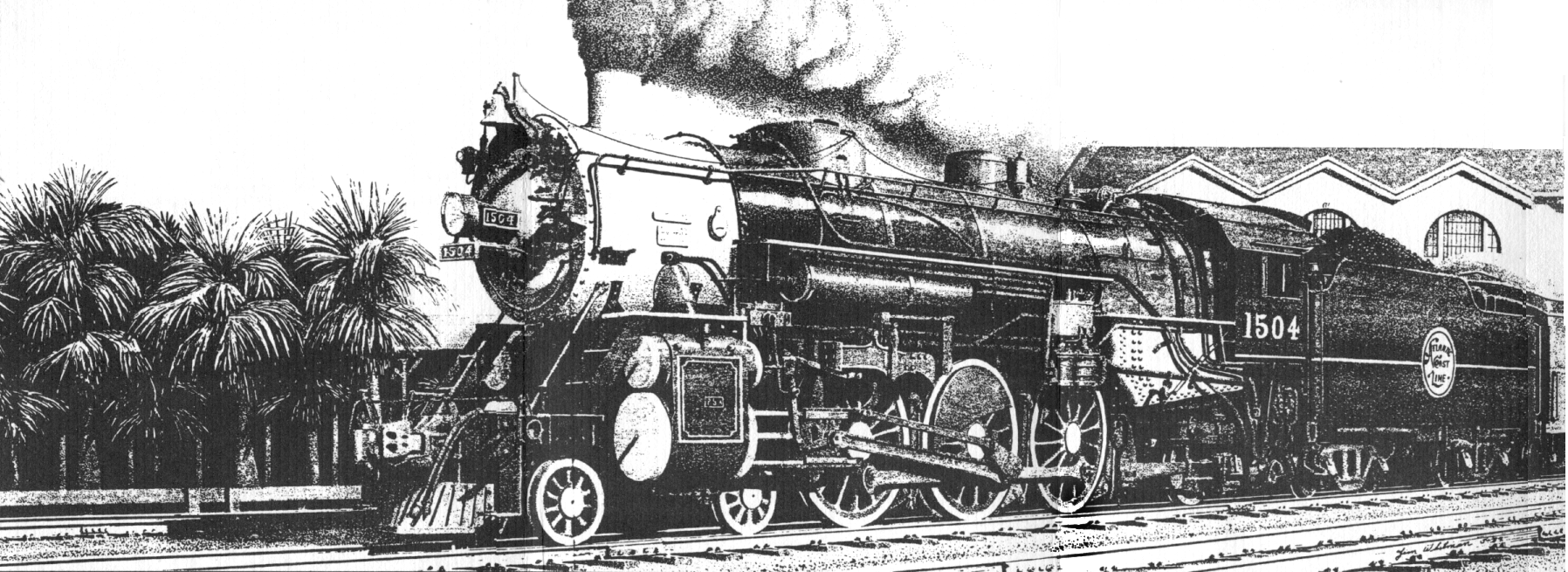Railway & Locomotive Historical Society, Inc.
Newsletter No. 140 _ December 2013
www.rlhssec.org
Destined for glory, the 1504, Jacksonville's Landmark Locomotive

The 1504 under steam by Jim Whitman.
Engine 1504 was destined for glory. Built by the American Locomotive Company for the United States Railway Administration (USRA) to haul troops, ordinance and military supplies during World War I, the 1504 was not completed until August of 1919, after the war had ended. Instead of hauling troop trains, the 1504 became one of the flagship engines of the Atlantic Coast Line Railroad (ACL), hauling premier passenger trains in and out of Florida. And when the workhorse was retired, it was brought to the ACL's new Jacksonville headquarters to be displayed as a proud symbol and memorial of its kind — one of the last of a vanishing breed.
But the engine's crowning glory was made manifest in 1989, when the American Society of Mechanical Engineers designated the 1504 as a National Landmark. The 1504 had been selected because it was such a well-preserved example of one of the most popular steam locomotives ever built.
One of a popular class of locomotives known as "Pacifics", which were first built in 1886, the 1504 was a P-5-A model, designed for multipurpose operations requiring speed and stamina.
Considered ideal for working Florida's flat terrain, many of the popular USRA Pacifics (and nearly 7,000 were built), were acquired by Southern railroads for first-class passenger service because they gave such a smooth and easy ride. During its heyday, operating over the ACL's Florida-focused 5,100 mile system, the 1504 hauled many of the railroad's premier passenger trains — trains that were known far and wide for their speed and luxurious accommodations — trains with proud names like the "Southwind", the "Miamian ", the "Dixie Flyer", the Florida Special" and the "Southland".
The 1504 could haul 10 or 12 passenger cars easily at 100 miles-per-hour, but that took some doing before the advent of automatic coal stokers which fed the engine's fires mechanically. One old railroader recalled that "running at high speed with the engine swinging wildly, with nothing to hold on to, the firemen would have to stand on deck and shovel 16 tons of coal into the firebox every five hours to keep up steam.
When steam power gave way to diesel, all the P-5-As, including the 1504, were converted from passenger to freight service. But even then, they were outstanding performers and could haul 50 to 60 freight cars at maximum allowable speeds.
